Books by alessandro pierattini

Cambridge University Press, 2022
In this book, Alessandro Pierattini offers a comprehensive study of the
evolution of pre-Archaic ... more In this book, Alessandro Pierattini offers a comprehensive study of the
evolution of pre-Archaic Greek temple architecture from the eleventh to
the mid-seventh century bc. Demystifying the formative stages of Greek
architecture, he traces how temples were transformed from unassuming
shrines made of perishable materials into large stone and terracotta monuments.
Grounded in archaeological evidence, the volume analyzes the
design, function, construction, and aesthetic of the Greek temple. While
the book’s primary focus is architectural, it also draws on nonarchitectural
material culture, ancient cult practice, and social history, which also defined the context that fostered the Greek temple’s initial development. In reconstituting this early history, Pierattini also draws attention to new developments as well as legacies from previous eras. Ultimately, he reveals why the temple’s pre-Archaic development is not only of interest in itself but also a key to the origins of the Greek monumental architecture of the Archaic period.
Editrice Dedalo, Rome 2009. pp. vii, 230; ISBN 978-8895913124., 2009
Papers by alessandro pierattini

Thiasos. Rivista di archeologia e architettura antica, 2022
With only a few exceptions, the scholarship on Greek architecture has addressed the aesthetic of ... more With only a few exceptions, the scholarship on Greek architecture has addressed the aesthetic of pre-Archaic architecture only to a limited extent and often with the purpose of tracing the origins of Doric and Ionic forms and conventions that are documented later, beginning in the second half of the 7th century. Taking a different perspective, this article addresses the aesthetic of pre-Archaic Greek architecture in its own context. It focuses on sacred buildings, which beginning at the end of the 8th century B.C. started to differentiate themselves from other buildings for their conspicuous size as well as for their decoration. The chronological scope of this article includes the 8th century B.C., when the evidence of sacred architecture increases dramatically in the Greek world, and the first half of the 7th, when the first experiments with cut stone and terracotta construction began to transform the appearance of the temple. Based on a review of the archaeological evidence, the article examines the treatment of architectural surfaces, the aesthetic importance of wooden columns and the roof, and the radical impact of terracotta roof tiles on the aesthetic of the temple.
Con poche eccezioni, gli studi sull’architettura greca hanno interessato l’estetica dell’architettura prearcaica solo tangenzialmente, spesso associati alla ricerca delle origini del repertorio formale degli ordini architettonici dorico e ionico, le cui prime testimonianze note si datano alla seconda metà del VII secolo a.C. Questo contributo si concentra invece sull’estetica dell’architettura prearcaica nel suo contesto specifico. Esaminati qui in particolare sono gli edifici sacri, che già a partire dalla fine dell’VIII a.C. secolo iniziano a distinguersi dal resto dell’architettura per dimensioni e a mostrare una particolare elaborazione visiva attraverso la decorazione. L’orizzonte cronologico considerato comprende l’VIII secolo a.C., periodo in cui le testimonianze dell’architettura religiosa greca iniziano a moltiplicarsi rapidamente, e la prima metà del VII, la fase cruciale in cui i primi esperimenti nella costruzione in pietra e terracotta iniziano a trasformare l’immagine del tempio. Passando in rassegna le principali testimonianze archeologiche, il contributo si interroga sul trattamento delle superfici architettoniche, sull’importanza estetica delle colonne lignee e della copertura, e sull’impatto radicale e permanente dell’invenzione delle tegole laterizie sull’immagine del tempio.

Bibliographic article. Oxford Bibliographies Online - Oxford University Press, 2021
Building technology encompasses all human activities involved in the production of buildings, fro... more Building technology encompasses all human activities involved in the production of buildings, from the alteration of natural resources for the production of building materials to their processing, transport, and assembly. The Greeks made significant contributions to the history of building technology. The Romans perfected several of their innovations, such as techniques for lifting heavy loads, which survived with little change until the Industrial Revolution. This bibliographic article surveys the construction of Greek architecture, along with its economic and social implications. Specifically, it focuses on the construction of monuments, which for the study of Greek construction technologies are paradigmatic for their innovative building methods and the considerable resources they required. This bibliography’s chronological scope thus covers the full range of development of Greek monumental architecture, from approximately the 8th century BCE through the Hellenistic period. Our main sources on Greek building technology and methods include the material remains from ancient buildings, or the impressions they left in the ground; the detailed financial accounts that the Greeks kept for major building projects, some of which are known from inscriptions dating from the 5th century onward; the Latin and Greek works of writers such as Vitruvius, Pliny, and Theophrastus, which include valuable information on natural resources, materials, and construction methods; and ancient (especially Roman) illustrations of working craftsmen or machines involved in the building process. Except in the Greek islands, where walls of unworked stones were always common, the first monumental Greek temples of the 8th to mid-7th centuries BCE were made predominantly of perishable materials, not much different from ordinary houses. The remains of their mud brick walls, timber posts, and thatch or clay roofs are rarely preserved and difficult to detect archaeologically. The shift to permanent materials began in the first half of the 7th century BCE, when temples appeared with roofs of terracotta tiles and walls of stone ashlars. While mud brick walls and thatch or clay roofs continued to be used for houses, terracotta roofing systems and cut-stone masonry soon replaced perishable materials in the construction of monumental architecture. The northern Peloponnese (at Olympia and in the Corinthia) first developed terracotta roof tiles, which soon spread across the Greek world with regional variations. In the early temples at Corinth and Isthmia, terracotta tile roofs were associated with ashlar walls from the outset. Within the first half of the 7th century BCE, ashlar masonry also appeared in Ionia, in the first Temple of Hera at Samos. Roof tiles, however, diffused quicker than cut-stone construction, and mud brick was still used for temple walls throughout the Archaic period, and occasionally beyond. Contingent to the development of cut-stone construction were significant advances in transport and lifting methods, which led to the adoption of the crane in the late 6th century BCE. The Classical and Hellenistic periods saw further advances in building technology. The loading capacity of lifting machines increased steadily to subsequently reach hundreds of tons in the Roman period. Methods for connecting blocks with metal clamps and dowels were also developed and perfected over time. Until the late Classical period, roof frames usually consisted of post-and-lintel structures. While roof trusses may have been experimented with in Sicily as early as the Archaic period, they seem to have appeared in other Greek areas (especially eastern Greece and the Aegean Islands) no earlier than the Hellenistic period. The references collected in this bibliography are organized in sections that address specific aspects of Greek building technology. Each section reviews a selection of studies on a specific topic and, when available, includes both general introductions intended for students and more specialized works intended for researchers. Not all important studies can be listed here, but readers will find them in the bibliographies of the studies that are included. The materials are organized as follows: General Overviews; Reference Works, Bibliographies; Scholarly Journals; Conference Publications; Literary and Epigraphic Sources; Architectural Design and Construction; Greek Engineering and Technology; Ancient Mechanics and Machines; Architects and Builders; the Economics of Construction; Materials, with an emphasis on stone; the process of Stone Construction, including all major stages from quarrying to the final setting and finishing of blocks; Roofing Systems in Terracotta and Marble; Roof Structures and Ceilings; Near Eastern influences on Greek Building Methods in the Larger Geographical Context and External Influences; Soil Subsidence and Foundations: Ancient Approaches and Archaeological Analysis; and Seismic Analysis, comprising works that examine the earthquake response of ancient Greek buildings. These last works were developed by engineers through a process of numerical analysis and tests on scaled replicas of ancient building components. Only marginally considered by archaeologists and architectural historians, this area of research has produced important results for an understanding of ancient Greek structures and building methods.

Annual of the British School at Athens 114: 1-40, 2019
The first stone ashlar blocks of Greek architecture, those of the mid-seventh-century temples at ... more The first stone ashlar blocks of Greek architecture, those of the mid-seventh-century temples at Isthmia and Corinth, pose a problem for understanding the beginnings of Greek stone construction.1 Their peculiar feature is the presence of grooves plausibly explained as a way to move the blocks with ropes. Yet scholars disagree about how these ropes would have been used, and during what stage of construction. The first excavators of the two temples suggested that the ropes would have served to lift each block into place, and were subsequently extracted from the grooves once the block had been set against its neighbour. Later scholars dismissed this theory as both inconsistent with the evidence and technically impracticable, questioning whether lifting machines were used in Greek construction as early as the mid-seventh century. Currently, the widely accepted view holds that the crane appeared in the Greek world only in the late sixth century. An alternative hypothesis is that the grooves were cut early in the construction process so that ropes could be used to manoeuvre the blocks within the quarry. However, the ‘lifting’ theory continues to have its adherents. Clarifying the significance of these parallel grooves is thus a matter of some importance to the history of Greek construction. This article reassesses the alternative theses on the basis of a new examination of the evidence, and demonstrates that the idea that the grooves served for lifting is the most plausible. Furthermore, it argues that forerunners of the crane appeared in Greece well before the late sixth century. Finally, by examining how the blocks would have been manoeuvred into place after lifting, it contends that the grooves also served the purpose of placement, with a method anticipating the Classical period's sophisticated lever technique.
Ερμηνεύοντας τις αύλακες περίδεσης. Η ανύψωση, η τοποθέτηση και η γένεση της Ελληνικής Μνημειακής αρχιτεκτονικής.
Οι πρώτες λιθόπλινθοι της Ελληνικής Αρχιτεκτονικής, των ναών των μέσων του 7ου αιώνα π.Χ. στην Ισθμία και την Κόρινθο, θέτουν ένα πρόβλημα για την κατανόηση των αρχών της λίθινης οικοδομικής. Αυτό το ιδιαίτερο χαρακτηριστικό τους είναι η παρουσία αυλάκων ερμηνευμένων λογικά ως ένα μέσα για μετακίνηση των πλίνθων με σχοινιά. Ωστόσο οι ερευνητές διαφωνούν ως προς τον τρόπο με τον οποίο αυτά τα σχοινιά θα χρησιμοποιούνταν και σε ποιο κατασκευαστικό στάδιο. Οι πρώτοι ανασκαφείς των δύο ναών πρότειναν ότι τα σχοινιά θα εξυπηρετούσαν την ανύψωση κάθε λιθόπλινθου στη θέση της, και ύστερα απομακρύνονταν από τις αυλακώσεις όταν η λιθόπλινθος είχε τοποθετηθεί σε επαφή με τη διπλανή της. Αργότερα ερευνητές απέρριψαν αυτή τη θεωρία τόσο ως αντιφατική με τα τεκμήρια όσο και τεχνικά ανέφικτη, αμφισβητώντας αν ανυψωτικές μηχανές χρησιμοποιούνταν στην αρχαιοελληνική οικοδομική ήδη από τα μέσα του 7ου αι. π.Χ. Επί του παρόντος, η ευρέως αποδεκτή θεωρία υποστηρίζει ότι ο γερανός εμφανίστηκε στον Ελληνικό κόσμο μόνο στον ύστερο 6ο αι. π.Χ. Μια εναλλακτική υπόθεση είναι ότι οι αύλακες ανοίγονταν νωρίς στην κατασκευαστική διαδικασία ώστε να μπορούν να χρησιμοποιηθούν σχοινιά για τη μετακίνηση των λιθόπλινθων μέσα στο λατομείο. Ωστόσο, η «ανυψωτική» θεωρία συνεχίζει να βρίσκει υποστηρικτές. Η διευκρίνηση της σημασίας αυτών των παράλληλων αυλακώσεων είναι έτσι ένα θέμα ιδιαίτερης σπουδαιότητας για την ιστορία της αρχαίας ελληνικής οικοδομικής. Αυτό το άρθρο, επανεκτιμά την εναλλακτική θεωρία με βάση την επανεξέταση των τεκμηρίων, και αποδεικνύει πως η ιδέα ότι οι αύλακες χρησίμευαν για την ανύψωση είναι η πιο εύλογη. Επιπλέον, το άρθρο υποστηρίζει ότι οι πρόδρομοι του γερανού εμφανίστηκαν στην Ελλάδα πολύ πριν τα τέλη του 6ου αι. Τέλος, μέσω της εξέτασης του τρόπου με τον οποίο οι λιθίπλινθοι θα μετακινούνταν στη θέση τους μετά την ανύψωση, διατείνεται ότι οι αύλακες χρησίμευαν επίσης στην τοποθέτηση, με μια μέθοδο που προβλέπει την εκλεπτισμένη τεχνική των μοχλών της Κλασικής περιόδου.
Journal of Roman Archaeology
American Journal of Archaeology https://www.ajaonline.org/book-review/3794, 2019
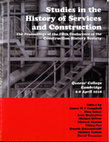
in Studies in the History of Services and Construction. Proceedings of the 5th Annual Conference of the Construction History Society, Cambridge University (UK). Edited by Campbell, J.W.P. et al. (eds), 207-18. ISBN 978-0-9928751-4-5., 2018
This paper focuses on the beginnings of stone-block construction in archaic Greece. After the fal... more This paper focuses on the beginnings of stone-block construction in archaic Greece. After the fall of the Mycenaean civilization, in the Early Iron Age the use of stone in construction had mostly been confined to rubble socles supporting mud brick walls. It was at the beginning of the archaic period that walls made of blocks squared on all sides first appeared in Greek architecture.
This crucial phase has been scarcely investigated, despite a copious literature on Greek construction. In fact, scholarship in the fields of art and architectural history has mostly dwelt on ancient literature narrating the mythical origins of stone temples (the Pindaric myth of the temple of Apollo at Delphi) or of the stone orders (Vitruvius), rather than on the physical evidence of the earliest Greek stone-block buildings. These are found in the Corinthia, where two temples were built in the mid-seventh century B.C. at Corinth and Isthmia, using the local limestone. While the finds from Isthmia have been partly published, the evidence from Corinth is yet unknown to the scholarly public, and, in general, a comprehensive study of the stone construction process used at the two sites has not been conducted so far.
This paper seeks to reconstruct this process on the basis of direct examination of the blocks from the two temples, which I have carried out since 2014 with the support of the American School of Classical Studies at Athens and of the University of Chicago Excavations at Isthmia. Analysis of the materials has involved tool marks as well as the morphology of the blocks and their peculiar cuttings. Such aspects of the evidence are informative of the various stages of construction, from quarrying and transportation to lifting, setting, and the final finishing of the blocks. At the same time, experimental tests on replica blocks have constituted a valuable tool to corroborate interpretation. As a last step, the evidence from the mid-seventh century Corinthia has been reconsidered in relation to the broader context of material culture in the Eastern Mediterranean from the Late Bronze Age through the Early Iron Age. This enables us to establish to what extent the Corinthian technical advancements represent an original contribution to the history of construction, as well as to trace the origins of this local phenomenon.
The conclusions of this research show that building practices so far documented in later archaic contexts were employed since the very beginning of Greek stone construction. These include, for instance, the habit of transporting the blocks while protected by an extra-layer of stone in order to avoid accidental damage. Moreover, the evidence suggests that the crane, which is believed to have been invented in the late sixth century B.C., seems to have already been experimented with in the mid-seventh century Corinthia. Last but not least, study of Greek material culture in the centuries before the appearance of the two temples demonstrates that Corinthian stone-working originated from a local craft tradition of stone sarcophagi, which appeared in the region as early as 900 B.C.
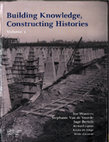
Proceedings of the Sixth International Congress on Construction History (6ICCH), Brussels, Palace of the Academies, July 9-13, 2018. Taylor & Francis Group, 2018
The invention of the crane is among the most remarkable Greek contributions to the history of con... more The invention of the crane is among the most remarkable Greek contributions to the history of construction. While it is believed that crane technology spread in Greece in the late sixth century BC, grooves observed on the first stone blocks of Greek architecture, which are those of the early temples at Corinth and Isthmia, sug-gest that the crane might have been experimented with as early as the mid-seventh century BC. This view has been criticized on practical grounds. Based on re-examination of the finds and experimental tests, this paper demonstrates that a lifting machine was most plausibly used with the blocks of the two temples. This view does not clash with the idea that fully developed cranes only became common much later: indeed, fore-runners of the crane without winches or hoists seem to have been used in Greece since 900 BC and in Egypt as early as the Bronze Age.
Quaderni dell'Istituto di Storia dell'Architettura n.s. 67: 5-18., 2017
Proceedings of the International congress: Preserving Transcultural Heritage: Your way or my way?, Lisbon (Portugal), 05-08 July, Lisbon University, Caleidoscópio, 555-564. ISBN: 978-989-658-467-2, 2017
This paper presents a preliminary restoration project for the House of Amphitrite ad Curculum, a ... more This paper presents a preliminary restoration project for the House of Amphitrite ad Curculum, a Roman colony established in Numidia (present-day Algeria) by Nerva in the late 1st century AD. The House has a typical peristyle plan and is built of opus africanum masonry. The project favors traditional techniques and local materials, and involves partial reconstruction of the walls and roof in order to restore the legibility of the interior space and to protect the original mosaics.
Indeed, these will be moved from the museum (where they are presently located) to their original position within the house.
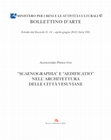
Bollettino d'Arte, fascicolo 14 (APRILE-GIUGNO 2012); pp. 1-24., 2012
""Scaenographia” and “Aedificatio” in the Architecture of the Vesuvian Cities
The essay discus... more ""Scaenographia” and “Aedificatio” in the Architecture of the Vesuvian Cities
The essay discusses the complex connection between Pompeian illusionistic wall–painting — the so–called Second Style — and architecture, proposing two keys to its understanding. The first deals with the relationship between wall decoration and built architecture, and provides an opportunity to think about how decoration affects both the character of the rooms of a domus as well as how these rooms were used.
The second refers to the connection — as it pertains to the fictitious dimension of the painting — between representation and that which is represented, between the trompe–l’oeil and its subject matter, which, in the case of the Second Style, is strictly architectural in nature. The hypotheses as to the origins of the Second Style’s figurative repertoire — for which the Theatre seems one of the most probable sources — are explained with reference to the main interpreters of a long–standing debate, full of cultural implications.
Moreover, Theatre — the quintessential ‘stage of vision’ — recalls the complex issue of perspective in antiquity in two well–known Vitruvian passages. Different scholars see ancient perspective, either as an early imperfect beginning of modern perspective, or as the result of a different idea of spatial representation rooted in ancient culture and not without a certain theoretical rigour.
Il saggio tratteggia le complesse relazioni tra la pittura parietale pompeiana a carattere illusionistico – il cosiddetto II stile - e l’architettura, proponendo due chiavi di lettura. La prima riguarda il rapporto tra la decorazione parietale e l’architettura nella sua dimensione reale, ed offre occasione di riflettere sul modo in cui la decorazione partecipa della funzione e del carattere dei diversi ambienti della domus. La seconda riguarda invece il rapporto, tutto risolto nella dimensione fittizia del dipinto, tra la rappresentazione ed il rappresentato, ovvero tra il trompe-l’oeil e i suoi soggetti, che nel caso del II stile possiedono carattere squisitamente architettonico. Le ipotesi sulle origini di tale repertorio figurativo vengono esposte in riferimento ai principali interpreti di un dibattito lungo e denso di implicazioni culturali, che individua nella scena teatrale una delle fonti più probabili. Il tema del teatro, ‘luogo della visione’ per antonomasia, richiama inoltre immancabilmente – attraverso due noti passi vitruviani – quello assai controverso della ‘prospettiva’ degli antichi, che scuole di pensiero diverse hanno interpretato o come un esordio imperfetto della teoria prospettica a noi familiare, o come il frutto di una diversa idea di rappresentazione dello spazio, espressione della cultura del suo tempo e non priva di un certo rigore.""

Rivista di Studi Pompeiani 15: 127-140., 2004
L'articolo presenta i risultati di una ricerca svolta nel biennio 2001-2002, tesa ad approfondire... more L'articolo presenta i risultati di una ricerca svolta nel biennio 2001-2002, tesa ad approfondire lo studio dei caratteri costruttivi delle abitazioni dell'antica Herculaneum.
La ricerca ha condotto alla redazione di un "Manuale di restauro dell'edilizia archeologica di Ercolano", rivolto a fornire agli operatori del settore indicazioni tecniche utili alla stesura dei progetti di restauro architettonico. L'aspetto più significativo consiste nella restituzione delle tecniche edilizie originali e fa eco all'auspicio, espresso da vari studiosi in tempi recenti, che un metodo unitario per la cura dei monumenti archeologici vesuviani possa, in un futuro prossimo, privilegiare interventi qualificati dal rispetto sostanziale e semantico degli organismi antichi.
Il campo della ricerca è circoscritto alle abitazioni, ovvero alle declinazioni locali del tipo della domus; la ricerca non contempla, invece, i monumenti e gli edifici pubblici come il teatro, la palestra, le terme e le strutture del foro, che restano oggetto di auspicabili sviluppi. Si sottolinea la connotazione progettuale del lavoro, culminato con l'integrazione o la riprogettazione, ove necessario, di brani edilizi non più esistenti,
condotta sulla base dei lacerti e delle tracce (ad Ercolano conservate meglio che altrove), e dell'esame delle fonti documentarie.
Book chapters by alessandro pierattini
in Modelli Architettonici: funzione ed evoluzione di uno strumento di concezione e di rappresentazione. Edited by S. Frommel. Paris, Picard - Rome, Campisano; 2015, 25-34. , 2015
Book Reviews by alessandro pierattini
AJA Open Access online, 2019
Journal of Roman Archaeology 31, 2018


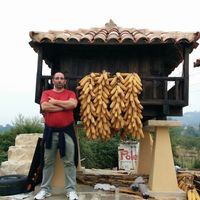





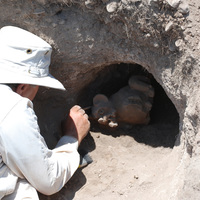


Uploads
Books by alessandro pierattini
evolution of pre-Archaic Greek temple architecture from the eleventh to
the mid-seventh century bc. Demystifying the formative stages of Greek
architecture, he traces how temples were transformed from unassuming
shrines made of perishable materials into large stone and terracotta monuments.
Grounded in archaeological evidence, the volume analyzes the
design, function, construction, and aesthetic of the Greek temple. While
the book’s primary focus is architectural, it also draws on nonarchitectural
material culture, ancient cult practice, and social history, which also defined the context that fostered the Greek temple’s initial development. In reconstituting this early history, Pierattini also draws attention to new developments as well as legacies from previous eras. Ultimately, he reveals why the temple’s pre-Archaic development is not only of interest in itself but also a key to the origins of the Greek monumental architecture of the Archaic period.
Papers by alessandro pierattini
Con poche eccezioni, gli studi sull’architettura greca hanno interessato l’estetica dell’architettura prearcaica solo tangenzialmente, spesso associati alla ricerca delle origini del repertorio formale degli ordini architettonici dorico e ionico, le cui prime testimonianze note si datano alla seconda metà del VII secolo a.C. Questo contributo si concentra invece sull’estetica dell’architettura prearcaica nel suo contesto specifico. Esaminati qui in particolare sono gli edifici sacri, che già a partire dalla fine dell’VIII a.C. secolo iniziano a distinguersi dal resto dell’architettura per dimensioni e a mostrare una particolare elaborazione visiva attraverso la decorazione. L’orizzonte cronologico considerato comprende l’VIII secolo a.C., periodo in cui le testimonianze dell’architettura religiosa greca iniziano a moltiplicarsi rapidamente, e la prima metà del VII, la fase cruciale in cui i primi esperimenti nella costruzione in pietra e terracotta iniziano a trasformare l’immagine del tempio. Passando in rassegna le principali testimonianze archeologiche, il contributo si interroga sul trattamento delle superfici architettoniche, sull’importanza estetica delle colonne lignee e della copertura, e sull’impatto radicale e permanente dell’invenzione delle tegole laterizie sull’immagine del tempio.
Ερμηνεύοντας τις αύλακες περίδεσης. Η ανύψωση, η τοποθέτηση και η γένεση της Ελληνικής Μνημειακής αρχιτεκτονικής.
Οι πρώτες λιθόπλινθοι της Ελληνικής Αρχιτεκτονικής, των ναών των μέσων του 7ου αιώνα π.Χ. στην Ισθμία και την Κόρινθο, θέτουν ένα πρόβλημα για την κατανόηση των αρχών της λίθινης οικοδομικής. Αυτό το ιδιαίτερο χαρακτηριστικό τους είναι η παρουσία αυλάκων ερμηνευμένων λογικά ως ένα μέσα για μετακίνηση των πλίνθων με σχοινιά. Ωστόσο οι ερευνητές διαφωνούν ως προς τον τρόπο με τον οποίο αυτά τα σχοινιά θα χρησιμοποιούνταν και σε ποιο κατασκευαστικό στάδιο. Οι πρώτοι ανασκαφείς των δύο ναών πρότειναν ότι τα σχοινιά θα εξυπηρετούσαν την ανύψωση κάθε λιθόπλινθου στη θέση της, και ύστερα απομακρύνονταν από τις αυλακώσεις όταν η λιθόπλινθος είχε τοποθετηθεί σε επαφή με τη διπλανή της. Αργότερα ερευνητές απέρριψαν αυτή τη θεωρία τόσο ως αντιφατική με τα τεκμήρια όσο και τεχνικά ανέφικτη, αμφισβητώντας αν ανυψωτικές μηχανές χρησιμοποιούνταν στην αρχαιοελληνική οικοδομική ήδη από τα μέσα του 7ου αι. π.Χ. Επί του παρόντος, η ευρέως αποδεκτή θεωρία υποστηρίζει ότι ο γερανός εμφανίστηκε στον Ελληνικό κόσμο μόνο στον ύστερο 6ο αι. π.Χ. Μια εναλλακτική υπόθεση είναι ότι οι αύλακες ανοίγονταν νωρίς στην κατασκευαστική διαδικασία ώστε να μπορούν να χρησιμοποιηθούν σχοινιά για τη μετακίνηση των λιθόπλινθων μέσα στο λατομείο. Ωστόσο, η «ανυψωτική» θεωρία συνεχίζει να βρίσκει υποστηρικτές. Η διευκρίνηση της σημασίας αυτών των παράλληλων αυλακώσεων είναι έτσι ένα θέμα ιδιαίτερης σπουδαιότητας για την ιστορία της αρχαίας ελληνικής οικοδομικής. Αυτό το άρθρο, επανεκτιμά την εναλλακτική θεωρία με βάση την επανεξέταση των τεκμηρίων, και αποδεικνύει πως η ιδέα ότι οι αύλακες χρησίμευαν για την ανύψωση είναι η πιο εύλογη. Επιπλέον, το άρθρο υποστηρίζει ότι οι πρόδρομοι του γερανού εμφανίστηκαν στην Ελλάδα πολύ πριν τα τέλη του 6ου αι. Τέλος, μέσω της εξέτασης του τρόπου με τον οποίο οι λιθίπλινθοι θα μετακινούνταν στη θέση τους μετά την ανύψωση, διατείνεται ότι οι αύλακες χρησίμευαν επίσης στην τοποθέτηση, με μια μέθοδο που προβλέπει την εκλεπτισμένη τεχνική των μοχλών της Κλασικής περιόδου.
This crucial phase has been scarcely investigated, despite a copious literature on Greek construction. In fact, scholarship in the fields of art and architectural history has mostly dwelt on ancient literature narrating the mythical origins of stone temples (the Pindaric myth of the temple of Apollo at Delphi) or of the stone orders (Vitruvius), rather than on the physical evidence of the earliest Greek stone-block buildings. These are found in the Corinthia, where two temples were built in the mid-seventh century B.C. at Corinth and Isthmia, using the local limestone. While the finds from Isthmia have been partly published, the evidence from Corinth is yet unknown to the scholarly public, and, in general, a comprehensive study of the stone construction process used at the two sites has not been conducted so far.
This paper seeks to reconstruct this process on the basis of direct examination of the blocks from the two temples, which I have carried out since 2014 with the support of the American School of Classical Studies at Athens and of the University of Chicago Excavations at Isthmia. Analysis of the materials has involved tool marks as well as the morphology of the blocks and their peculiar cuttings. Such aspects of the evidence are informative of the various stages of construction, from quarrying and transportation to lifting, setting, and the final finishing of the blocks. At the same time, experimental tests on replica blocks have constituted a valuable tool to corroborate interpretation. As a last step, the evidence from the mid-seventh century Corinthia has been reconsidered in relation to the broader context of material culture in the Eastern Mediterranean from the Late Bronze Age through the Early Iron Age. This enables us to establish to what extent the Corinthian technical advancements represent an original contribution to the history of construction, as well as to trace the origins of this local phenomenon.
The conclusions of this research show that building practices so far documented in later archaic contexts were employed since the very beginning of Greek stone construction. These include, for instance, the habit of transporting the blocks while protected by an extra-layer of stone in order to avoid accidental damage. Moreover, the evidence suggests that the crane, which is believed to have been invented in the late sixth century B.C., seems to have already been experimented with in the mid-seventh century Corinthia. Last but not least, study of Greek material culture in the centuries before the appearance of the two temples demonstrates that Corinthian stone-working originated from a local craft tradition of stone sarcophagi, which appeared in the region as early as 900 B.C.
Indeed, these will be moved from the museum (where they are presently located) to their original position within the house.
The essay discusses the complex connection between Pompeian illusionistic wall–painting — the so–called Second Style — and architecture, proposing two keys to its understanding. The first deals with the relationship between wall decoration and built architecture, and provides an opportunity to think about how decoration affects both the character of the rooms of a domus as well as how these rooms were used.
The second refers to the connection — as it pertains to the fictitious dimension of the painting — between representation and that which is represented, between the trompe–l’oeil and its subject matter, which, in the case of the Second Style, is strictly architectural in nature. The hypotheses as to the origins of the Second Style’s figurative repertoire — for which the Theatre seems one of the most probable sources — are explained with reference to the main interpreters of a long–standing debate, full of cultural implications.
Moreover, Theatre — the quintessential ‘stage of vision’ — recalls the complex issue of perspective in antiquity in two well–known Vitruvian passages. Different scholars see ancient perspective, either as an early imperfect beginning of modern perspective, or as the result of a different idea of spatial representation rooted in ancient culture and not without a certain theoretical rigour.
Il saggio tratteggia le complesse relazioni tra la pittura parietale pompeiana a carattere illusionistico – il cosiddetto II stile - e l’architettura, proponendo due chiavi di lettura. La prima riguarda il rapporto tra la decorazione parietale e l’architettura nella sua dimensione reale, ed offre occasione di riflettere sul modo in cui la decorazione partecipa della funzione e del carattere dei diversi ambienti della domus. La seconda riguarda invece il rapporto, tutto risolto nella dimensione fittizia del dipinto, tra la rappresentazione ed il rappresentato, ovvero tra il trompe-l’oeil e i suoi soggetti, che nel caso del II stile possiedono carattere squisitamente architettonico. Le ipotesi sulle origini di tale repertorio figurativo vengono esposte in riferimento ai principali interpreti di un dibattito lungo e denso di implicazioni culturali, che individua nella scena teatrale una delle fonti più probabili. Il tema del teatro, ‘luogo della visione’ per antonomasia, richiama inoltre immancabilmente – attraverso due noti passi vitruviani – quello assai controverso della ‘prospettiva’ degli antichi, che scuole di pensiero diverse hanno interpretato o come un esordio imperfetto della teoria prospettica a noi familiare, o come il frutto di una diversa idea di rappresentazione dello spazio, espressione della cultura del suo tempo e non priva di un certo rigore.""
La ricerca ha condotto alla redazione di un "Manuale di restauro dell'edilizia archeologica di Ercolano", rivolto a fornire agli operatori del settore indicazioni tecniche utili alla stesura dei progetti di restauro architettonico. L'aspetto più significativo consiste nella restituzione delle tecniche edilizie originali e fa eco all'auspicio, espresso da vari studiosi in tempi recenti, che un metodo unitario per la cura dei monumenti archeologici vesuviani possa, in un futuro prossimo, privilegiare interventi qualificati dal rispetto sostanziale e semantico degli organismi antichi.
Il campo della ricerca è circoscritto alle abitazioni, ovvero alle declinazioni locali del tipo della domus; la ricerca non contempla, invece, i monumenti e gli edifici pubblici come il teatro, la palestra, le terme e le strutture del foro, che restano oggetto di auspicabili sviluppi. Si sottolinea la connotazione progettuale del lavoro, culminato con l'integrazione o la riprogettazione, ove necessario, di brani edilizi non più esistenti,
condotta sulla base dei lacerti e delle tracce (ad Ercolano conservate meglio che altrove), e dell'esame delle fonti documentarie.
Book chapters by alessandro pierattini
Book Reviews by alessandro pierattini
evolution of pre-Archaic Greek temple architecture from the eleventh to
the mid-seventh century bc. Demystifying the formative stages of Greek
architecture, he traces how temples were transformed from unassuming
shrines made of perishable materials into large stone and terracotta monuments.
Grounded in archaeological evidence, the volume analyzes the
design, function, construction, and aesthetic of the Greek temple. While
the book’s primary focus is architectural, it also draws on nonarchitectural
material culture, ancient cult practice, and social history, which also defined the context that fostered the Greek temple’s initial development. In reconstituting this early history, Pierattini also draws attention to new developments as well as legacies from previous eras. Ultimately, he reveals why the temple’s pre-Archaic development is not only of interest in itself but also a key to the origins of the Greek monumental architecture of the Archaic period.
Con poche eccezioni, gli studi sull’architettura greca hanno interessato l’estetica dell’architettura prearcaica solo tangenzialmente, spesso associati alla ricerca delle origini del repertorio formale degli ordini architettonici dorico e ionico, le cui prime testimonianze note si datano alla seconda metà del VII secolo a.C. Questo contributo si concentra invece sull’estetica dell’architettura prearcaica nel suo contesto specifico. Esaminati qui in particolare sono gli edifici sacri, che già a partire dalla fine dell’VIII a.C. secolo iniziano a distinguersi dal resto dell’architettura per dimensioni e a mostrare una particolare elaborazione visiva attraverso la decorazione. L’orizzonte cronologico considerato comprende l’VIII secolo a.C., periodo in cui le testimonianze dell’architettura religiosa greca iniziano a moltiplicarsi rapidamente, e la prima metà del VII, la fase cruciale in cui i primi esperimenti nella costruzione in pietra e terracotta iniziano a trasformare l’immagine del tempio. Passando in rassegna le principali testimonianze archeologiche, il contributo si interroga sul trattamento delle superfici architettoniche, sull’importanza estetica delle colonne lignee e della copertura, e sull’impatto radicale e permanente dell’invenzione delle tegole laterizie sull’immagine del tempio.
Ερμηνεύοντας τις αύλακες περίδεσης. Η ανύψωση, η τοποθέτηση και η γένεση της Ελληνικής Μνημειακής αρχιτεκτονικής.
Οι πρώτες λιθόπλινθοι της Ελληνικής Αρχιτεκτονικής, των ναών των μέσων του 7ου αιώνα π.Χ. στην Ισθμία και την Κόρινθο, θέτουν ένα πρόβλημα για την κατανόηση των αρχών της λίθινης οικοδομικής. Αυτό το ιδιαίτερο χαρακτηριστικό τους είναι η παρουσία αυλάκων ερμηνευμένων λογικά ως ένα μέσα για μετακίνηση των πλίνθων με σχοινιά. Ωστόσο οι ερευνητές διαφωνούν ως προς τον τρόπο με τον οποίο αυτά τα σχοινιά θα χρησιμοποιούνταν και σε ποιο κατασκευαστικό στάδιο. Οι πρώτοι ανασκαφείς των δύο ναών πρότειναν ότι τα σχοινιά θα εξυπηρετούσαν την ανύψωση κάθε λιθόπλινθου στη θέση της, και ύστερα απομακρύνονταν από τις αυλακώσεις όταν η λιθόπλινθος είχε τοποθετηθεί σε επαφή με τη διπλανή της. Αργότερα ερευνητές απέρριψαν αυτή τη θεωρία τόσο ως αντιφατική με τα τεκμήρια όσο και τεχνικά ανέφικτη, αμφισβητώντας αν ανυψωτικές μηχανές χρησιμοποιούνταν στην αρχαιοελληνική οικοδομική ήδη από τα μέσα του 7ου αι. π.Χ. Επί του παρόντος, η ευρέως αποδεκτή θεωρία υποστηρίζει ότι ο γερανός εμφανίστηκε στον Ελληνικό κόσμο μόνο στον ύστερο 6ο αι. π.Χ. Μια εναλλακτική υπόθεση είναι ότι οι αύλακες ανοίγονταν νωρίς στην κατασκευαστική διαδικασία ώστε να μπορούν να χρησιμοποιηθούν σχοινιά για τη μετακίνηση των λιθόπλινθων μέσα στο λατομείο. Ωστόσο, η «ανυψωτική» θεωρία συνεχίζει να βρίσκει υποστηρικτές. Η διευκρίνηση της σημασίας αυτών των παράλληλων αυλακώσεων είναι έτσι ένα θέμα ιδιαίτερης σπουδαιότητας για την ιστορία της αρχαίας ελληνικής οικοδομικής. Αυτό το άρθρο, επανεκτιμά την εναλλακτική θεωρία με βάση την επανεξέταση των τεκμηρίων, και αποδεικνύει πως η ιδέα ότι οι αύλακες χρησίμευαν για την ανύψωση είναι η πιο εύλογη. Επιπλέον, το άρθρο υποστηρίζει ότι οι πρόδρομοι του γερανού εμφανίστηκαν στην Ελλάδα πολύ πριν τα τέλη του 6ου αι. Τέλος, μέσω της εξέτασης του τρόπου με τον οποίο οι λιθίπλινθοι θα μετακινούνταν στη θέση τους μετά την ανύψωση, διατείνεται ότι οι αύλακες χρησίμευαν επίσης στην τοποθέτηση, με μια μέθοδο που προβλέπει την εκλεπτισμένη τεχνική των μοχλών της Κλασικής περιόδου.
This crucial phase has been scarcely investigated, despite a copious literature on Greek construction. In fact, scholarship in the fields of art and architectural history has mostly dwelt on ancient literature narrating the mythical origins of stone temples (the Pindaric myth of the temple of Apollo at Delphi) or of the stone orders (Vitruvius), rather than on the physical evidence of the earliest Greek stone-block buildings. These are found in the Corinthia, where two temples were built in the mid-seventh century B.C. at Corinth and Isthmia, using the local limestone. While the finds from Isthmia have been partly published, the evidence from Corinth is yet unknown to the scholarly public, and, in general, a comprehensive study of the stone construction process used at the two sites has not been conducted so far.
This paper seeks to reconstruct this process on the basis of direct examination of the blocks from the two temples, which I have carried out since 2014 with the support of the American School of Classical Studies at Athens and of the University of Chicago Excavations at Isthmia. Analysis of the materials has involved tool marks as well as the morphology of the blocks and their peculiar cuttings. Such aspects of the evidence are informative of the various stages of construction, from quarrying and transportation to lifting, setting, and the final finishing of the blocks. At the same time, experimental tests on replica blocks have constituted a valuable tool to corroborate interpretation. As a last step, the evidence from the mid-seventh century Corinthia has been reconsidered in relation to the broader context of material culture in the Eastern Mediterranean from the Late Bronze Age through the Early Iron Age. This enables us to establish to what extent the Corinthian technical advancements represent an original contribution to the history of construction, as well as to trace the origins of this local phenomenon.
The conclusions of this research show that building practices so far documented in later archaic contexts were employed since the very beginning of Greek stone construction. These include, for instance, the habit of transporting the blocks while protected by an extra-layer of stone in order to avoid accidental damage. Moreover, the evidence suggests that the crane, which is believed to have been invented in the late sixth century B.C., seems to have already been experimented with in the mid-seventh century Corinthia. Last but not least, study of Greek material culture in the centuries before the appearance of the two temples demonstrates that Corinthian stone-working originated from a local craft tradition of stone sarcophagi, which appeared in the region as early as 900 B.C.
Indeed, these will be moved from the museum (where they are presently located) to their original position within the house.
The essay discusses the complex connection between Pompeian illusionistic wall–painting — the so–called Second Style — and architecture, proposing two keys to its understanding. The first deals with the relationship between wall decoration and built architecture, and provides an opportunity to think about how decoration affects both the character of the rooms of a domus as well as how these rooms were used.
The second refers to the connection — as it pertains to the fictitious dimension of the painting — between representation and that which is represented, between the trompe–l’oeil and its subject matter, which, in the case of the Second Style, is strictly architectural in nature. The hypotheses as to the origins of the Second Style’s figurative repertoire — for which the Theatre seems one of the most probable sources — are explained with reference to the main interpreters of a long–standing debate, full of cultural implications.
Moreover, Theatre — the quintessential ‘stage of vision’ — recalls the complex issue of perspective in antiquity in two well–known Vitruvian passages. Different scholars see ancient perspective, either as an early imperfect beginning of modern perspective, or as the result of a different idea of spatial representation rooted in ancient culture and not without a certain theoretical rigour.
Il saggio tratteggia le complesse relazioni tra la pittura parietale pompeiana a carattere illusionistico – il cosiddetto II stile - e l’architettura, proponendo due chiavi di lettura. La prima riguarda il rapporto tra la decorazione parietale e l’architettura nella sua dimensione reale, ed offre occasione di riflettere sul modo in cui la decorazione partecipa della funzione e del carattere dei diversi ambienti della domus. La seconda riguarda invece il rapporto, tutto risolto nella dimensione fittizia del dipinto, tra la rappresentazione ed il rappresentato, ovvero tra il trompe-l’oeil e i suoi soggetti, che nel caso del II stile possiedono carattere squisitamente architettonico. Le ipotesi sulle origini di tale repertorio figurativo vengono esposte in riferimento ai principali interpreti di un dibattito lungo e denso di implicazioni culturali, che individua nella scena teatrale una delle fonti più probabili. Il tema del teatro, ‘luogo della visione’ per antonomasia, richiama inoltre immancabilmente – attraverso due noti passi vitruviani – quello assai controverso della ‘prospettiva’ degli antichi, che scuole di pensiero diverse hanno interpretato o come un esordio imperfetto della teoria prospettica a noi familiare, o come il frutto di una diversa idea di rappresentazione dello spazio, espressione della cultura del suo tempo e non priva di un certo rigore.""
La ricerca ha condotto alla redazione di un "Manuale di restauro dell'edilizia archeologica di Ercolano", rivolto a fornire agli operatori del settore indicazioni tecniche utili alla stesura dei progetti di restauro architettonico. L'aspetto più significativo consiste nella restituzione delle tecniche edilizie originali e fa eco all'auspicio, espresso da vari studiosi in tempi recenti, che un metodo unitario per la cura dei monumenti archeologici vesuviani possa, in un futuro prossimo, privilegiare interventi qualificati dal rispetto sostanziale e semantico degli organismi antichi.
Il campo della ricerca è circoscritto alle abitazioni, ovvero alle declinazioni locali del tipo della domus; la ricerca non contempla, invece, i monumenti e gli edifici pubblici come il teatro, la palestra, le terme e le strutture del foro, che restano oggetto di auspicabili sviluppi. Si sottolinea la connotazione progettuale del lavoro, culminato con l'integrazione o la riprogettazione, ove necessario, di brani edilizi non più esistenti,
condotta sulla base dei lacerti e delle tracce (ad Ercolano conservate meglio che altrove), e dell'esame delle fonti documentarie.
While claims about archaic fora have been made for Rome and for other cities, the evidence is controversial and in need of a careful reassessment. Later on, the fragmentary archaeological evidence for fora at Fregellae and Cosa suggests that these spaces also were monumentalized during the third and second centuries BCE. While basilicas are archaeologically identified from their architectural form, early fora often prove more challenging to locate and are often only indicated by the buildings that typically lie adjacent to them, e.g., comitia or temples. Although early basilicas are located on fora, they are typically left out of this debate. Their overlapping functions and relatively synchronized emergence, however, suggest that these two spaces are entwined and that their origins should be considered together.
The conference brings together leading scholars to discuss in detail the origins of these two spaces. At the center of this discussion are the key sites of Rome, Cosa, Pompeii, and Fregellae. While this conference will focus on these sites during the periods of emergence, or respectively the third and second centuries BCE, to unravel these formation processes, this conference aims to consider related aspects of urbanization before and after these periods, with particular reference to the seventh and sixth centuries BCE.
This paper makes its case in three parts. The first part identifies some critical flaws in both Herdt’s line of argument and the alternative reconstruction. The second part reassesses the “peripteral” reconstruction by examining roof technology and weight, the building’s hypothetical structure as restored from the size and arrangement of walls and post holes, and the risk of structural failure in relation to the roof’s weight and structure. Together, the first two parts demonstrate that the peripteral reconstruction is not only structurally valid, but that it fits the archaeological evidence better than the alternative. The third part examines the effect of the strong Aegean winds. Though Herd’s study did not take them into account, they greatly affected the stability of the building’s steep thatched roof. This part illustrates the methods and goals of ongoing wind tunnel experiments and numerical studies that will allow for a more realistic structural assessment of the building. By elucidating the posts’ structural function, these studies will ultimately help us understand to what extent structure affected the veranda’s design, and its very existence.
https://architecture.nd.edu/news-events/events/2022/05/09/the-toumba-building-at-lefkandi-preliminary-results-of-a-new-architectural-analysis/
Built in the first half of the tenth century BC, the Toumba Building at Lefkandi is one of the earliest-known monumental structures built in Greece following the end of the Bronze Age. According to J.J. Coulton’s 1993 reconstruction, the building had a “veranda” of wooden posts around the perimeter, which therefore established the Toumba Building as the earliest-known local antecedent of the peristyle of later Greek temples. This conception was widely accepted by scholars and went unchallenged until 2015, when Georg Herdt called it into question on structural grounds. Subsequent studies have therefore been divided, with some retaining Coulton’s peripteral reconstruction, and others rejecting it as “structurally questionable”.
This colloquium presents the preliminary findings of a new architectural study of the Toumba Building that began in 2020 at the ISHA Lab—Laboratory for the Interdisciplinary Study of Historical Architecture. A team of architectural historians, civil engineers, and aerospace engineers from the University of Notre Dame, joined by scholars from other institutions, has reassessed the structural feasibility of Coulton’s peripteral reconstruction. Using finite element analysis, the team has comprehensively analyzed the structural capacity of the reconstruction. Through the use of technologies normally used in aerospace research, the team has also determined the effect of wind loading. This colloquium illustrates the interdisciplinary methods and goals of ISHA’s ongoing research on the building.
By elucidating the structural function of the Toumba Building’s wooden posts, this research will provide an answer as to whether the building could have had a structurally functioning wooden ‘peristyle’. More broadly, it will clarify how the building’s design related to structural needs, thus furthering our understanding of early Greek architecture.
Without excluding the possibility of cultural reasons for the apsidal plan, this paper draws from modern wind engineering studies to understand how construction methods and the effects of wind influenced the form and orientation of buildings. Ethnographic accounts of traditional thatching methods, probably similar to ancient methods, show that it is easier to thatch a curvilinear roof than a rectangular one. Just as important, the shape of a roof significantly affected the pressures caused by wind. Air-flow surrounding an object produces the greatest pressure along sharp edges, where the layer of air around the object generates turbulence and negative pressure. Minimizing sharp edges, the semi-conical end of an apsidal roof was less exposed to wind damage than a gabled or hipped end. Wind also affected how builders chose to orient their roofs. A review of building orientation vis a vis the direction of local winds shows that many individual buildings and even whole settlements, such as Geometric Eretria, were arranged with thatched roofs’ apsidal ends against the dominant winds.
The large size of temples has been explained as a sign that in the newly formed Greek poleis cult admitted more participants, which implies a practical purpose. However, the distribution of evidence for animal sacrifice and ritual banquet does not substantiate this view. Rather, temples’ gigantism parallels a phenomenon observed in votive dedication, with emblematic objects such as tripod cauldrons crafted in a colossal size to celebrate their donors’ status.
The communis opinio that stone replaced mud brick to support the load of tiled roofs does not stand to technical examination. While durability was certainly an important factor, study of the first Greek stone temples suggests ideological implications. A centuries-old Corinthian tradition of burying elite individuals in monolithic sarcophagi associated stone with prestige, and the early appearance of ashlar temples in this region may have conveyed a similar meaning. Moreover, the archaeological record shows signs of increasing inequality in Corinthian society. The conspicuous investment in stone temples appears consistent with this trend. The mobilization of labor for ambitious building projects is generally recognized as an essential step in societies moving toward increased social stratification.
This paper addresses the problem with three different methods. First, it compares the production processes of the blocks from the two early temples at Corinth and Isthmia with those of previous and contemporary examples of Greek ashlar, asking to what extent the Corinthian peculiarities may derive from methods inherited from sarcophagus manufacture. Second, in comparing the chronologies of sarcophagi and architectural block production, it adopts an energetics approach to evaluate how these two industries may have boosted each other by increasing the number of craftsmen. Third, it explores questions of agency in relation to the concept and potential meaning of ashlar construction in Corinthian society.
It concludes that: 1) conditional to the production of the Corinthian blocks was the quarry technique by separation trenches, already used in sarcophagus fabrication but otherwise unattested in Greece through the EIA; 2) while the documented rise in sarcophagus production between the 8th and 7th centuries was quantitatively insufficient to boost craftsmanship, the effects of temple construction favored the subsequent rise in the number of sarcophagi ; 3) the concept of using blocks rather than traditional double-skin masonry likely relates to craftsman-aristocratic patron relationships both practically and ideologically.
This paper explores early Greek temple aesthetics based on archaeological evidence from temples of the Late Geometric and Early Archaic periods (eighth and early seventh centuries BCE). These periods saw the appearance of the first mud-and-wood hekatompeda as well as the transition to stone and tile construction. I focus on the features of interior and exterior wall surfaces, columns, and roofs. Materials examined include painted stucco fragments from the Late Geometric – Early Archaic temples at Isthmia, Corinth, and Kalapodi (South Temple); the so-called warrior frieze from Samos; remains of mud brick walls and stone column bases from several temples of the period; and Late Geometric votive architecture models.
While the primary context of the Kalapodi finds shows that wall paintings were on the inside, it has often been presumed that Isthmia's were on the outside. By contrast, my reexamination demonstrates that at Isthmia, too, as others have proposed for Corinth, they were most likely on the inside. The rough and shallow figures incised on a block from the first hekatompedon at Samos should not be regarded as a proto-Ionic frieze (Gruben). If they were preparation lines for painting (Kienast), they point to a technique different from that of the Corinthian megaolographiae. In general, both models and wall remains suggest that mud brick walls were often punctuated by wooden pilasters and sometimes left bare to expose polychrome patterns, despite the painted exteriors of terracotta models. Lastly, most temples were covered with steep thatched roofs that would have overshadowed their short, unimposing elevations. In the seventh century B.C., the introduction of shallow-pitched tiled roofs revolutionized temple aesthetics. Once dominant, the roof disappeared from sight, whereas columns and walls gained unprecedented prominence. Along with the appearance of the stylobate, this phenomenon would be crucial to the spread of the peripteral plan in archaic architecture.
This crucial phase has been scarcely investigated, despite a copious literature on Greek construction. In fact, scholarship in the fields of art and architectural history has mostly dwelt on ancient literature narrating the mythical origins of stone temples (the Pindaric myth of the temple of Apollo at Delphi) or of the stone orders (Vitruvius), rather than on the physical evidence of the earliest Greek stone-block buildings. These are found in the Corinthia, where two temples were built in the mid-seventh century B.C. at Corinth and Isthmia, using the local limestone. While the finds from Isthmia have been partly published, the evidence from Corinth is yet unknown to the scholarly public, and, in general, a comprehensive study of the stone construction process used at the two sites has not been conducted so far.
This paper seeks to reconstruct this process on the basis of direct examination of the blocks from the two temples, which I have carried out since 2014 with the support of the American School of Classical Studies at Athens and of the University of Chicago Excavations at Isthmia. Analysis of the materials has involved tool marks as well as the morphology of the blocks and their peculiar cuttings. Such aspects of the evidence are informative of the various stages of construction, from quarrying and transportation to lifting, setting, and the final finishing of the blocks. At the same time, experimental tests on replica blocks have constituted a valuable tool to corroborate interpretation. As a last step, the evidence from the mid-seventh century Corinthia has been reconsidered in relation to the broader context of material culture in the Eastern Mediterranean from the Late Bronze Age through the Early Iron Age. This enables us to establish to what extent the Corinthian technical advancements represent an original contribution to the history of construction, as well as to trace the origins of this local phenomenon.
The conclusions of this research show that building practices so far documented in later archaic contexts were employed since the very beginning of Greek stone construction. These include, for instance, the habit of transporting the blocks while protected by an extra-layer of stone in order to avoid accidental damage. Moreover, the evidence suggests that the crane, which is believed to have been invented in the late sixth century B.C., seems to have already been experimented with in the mid-seventh century Corinthia. Last but not least, study of Greek material culture in the centuries before the appearance of the two temples demonstrates that Corinthian stone-working originated from a local craft tradition of stone sarcophagi, which appeared in the region as early as 900 B.C.
In order to reassess the peristyle issue, I have reexamined the evidence from Isthmia, and in particular the blocks that were interpreted as a stylobate (Broneer), or alternatively as a toichobate (Rhodes). My analysis of these blocks indicates that they were laid down while still provided with a protective extra-layer of stone, which was not completely removed from the top of some of the blocks. Consequently, their uneven upper surface would not have provided a suitable base for a wall, which contradicts the toichobate hypothesis and leaves open the stylobate option.
As concerns the top of the wall, I have reexamined the relevant blocks and the eaves tiles from Corinth and Isthmia. The blocks from Isthmia that are shaped like a Doric geison are surely from a top course. However, I question their placement on the cella wall underneath the roof of the supposed peristyle (Hemans), because the slope of their projecting parts contradicts their proposed function as brackets. Other blocks from the top courses are those provided with cuttings for wooden beams. In both temples, the non-peripteral reconstruction (Rhodes) implies a cornice in which these blocks alternate with the geison blocks (Isthmia), or with their supposed equivalents (Corinth). My analysis of the blocks from Isthmia reveals inconsistencies with this sequence. Moreover, my estimates suggest that in both temples such a sequence would cause spacing of the roof beams to be hardly consistent with that of the eaves tiles. Therefore, I suggest that these two kinds of blocks belonged to different courses.
In conclusion, my work demonstrates inconsistencies in the hypotheses so far proposed and suggests a different direction for reconstruction.
This paper examines how this building reflects the practical purposes of spectacles, on the one hand, and the social and political context of Rome, on the other, during the transition from the republic to the empire.
The absence of carceres and underground rooms, generally used to introduce beasts into the arena, indicates that hunting shows were not yet performed in the amphitheater. It was Caesar who first brought together beast fights and gladiatorial combats within the same show in 46 B.C., thus creating a formula later canonized under Augustus.
The simple circulation, with an annular corridor serving both the arena and the podium, shows a lack of separation between spectators and gladiators. This reflects an early stage of development of the amphitheater type, prior to Augustus's Lex Julia Theatralis, which regulated the seating arrangements in the theater so as to reflect the Roman hierarchical social order. Once extended to the amphitheater, this brought a more complex and segregated circulation, typical of the greatest amphitheaters of the imperial age.
Moreover, this promiscuous circulation might imply a certain affinity between the gladiators and their public, perhaps war veterans of the colony Augustus established at Sutri after 41 B.C. Roman soldiers were in fact well acquainted with gladiatorial techniques, which had been long employed by the army.
Last but not least, a passage in the Codex Iustinianus links Statilius Taurus to Sutri, thus legitimating the idea that the rock-cut amphitheater may have served as a model to its Roman successor.
This paper reassesses previous scholarship on the basis of a new analysis of the finds from Isthmia and Corinth, and with the help of experimental tests performed on replica blocks. The first point addressed is how and when the channels were cut. The second concentrates on their function, which leads to discussing more general aspects of the construction practices experimented in the first Greek stone temples.
The factors relevant to the study of the channels include their size and disposition, the weight of the blocks, and the thickness and strength of the ancient ropes hypothetically used. Combined analysis of these factors shows that lifting the blocks by ropes attached to the channels was technically possible, while recent debate on Corinthian Geometric sarcophagi suggests that simple lifting machines may have been used in the area even before the Proto-Archaic period.
In short, the association of the channels with lifting would seem to be the most plausible hypothesis, while the other two are less convincing.
However, the closest archaic parallels suggest an alternative interpretation, which is confirmed by experimental tests: regardless of how the blocks were lifted, the channels were involved in setting the blocks tight against their neighbors.
Once a block had been lifted on its course, in fact, by pulling and releasing the ropes attached to its channels, a block could be easily maneuvered into place, with a dynamic similar to that later obtained with crowbars. Such a rudimentary method, nonetheless effective with blocks of a modest size, seems thus to mark the initial stage of a technique which, while remaining unchanged in its essence, grew in sophistication along with technical progress.
The domus is a 2nd century house, renovated in the 3rd and 5th century. It has a typical peristyle plan and prob¬ably served as a small collegium (guild hall), as suggested by the presence of a communal latrine. The masonry responds to the opus africanum type, a frame of big squared limestone blocks set horizontally and vertically, with infill of small stones roughly squared, bedded in lime mortar. Such kinds of masonry are widespread in Roman Africa and are found in Pompeii prior to the spread of concrete.
The preservation project favors traditional techniques and local materials, based on their high compatibility and reversibility. It addresses the conservation issues detected (super-ficial decay / structural damage), and involves partial reconstruction of the walls and roof, in order to restore the legibility of the interior space and to protect the mosaics.